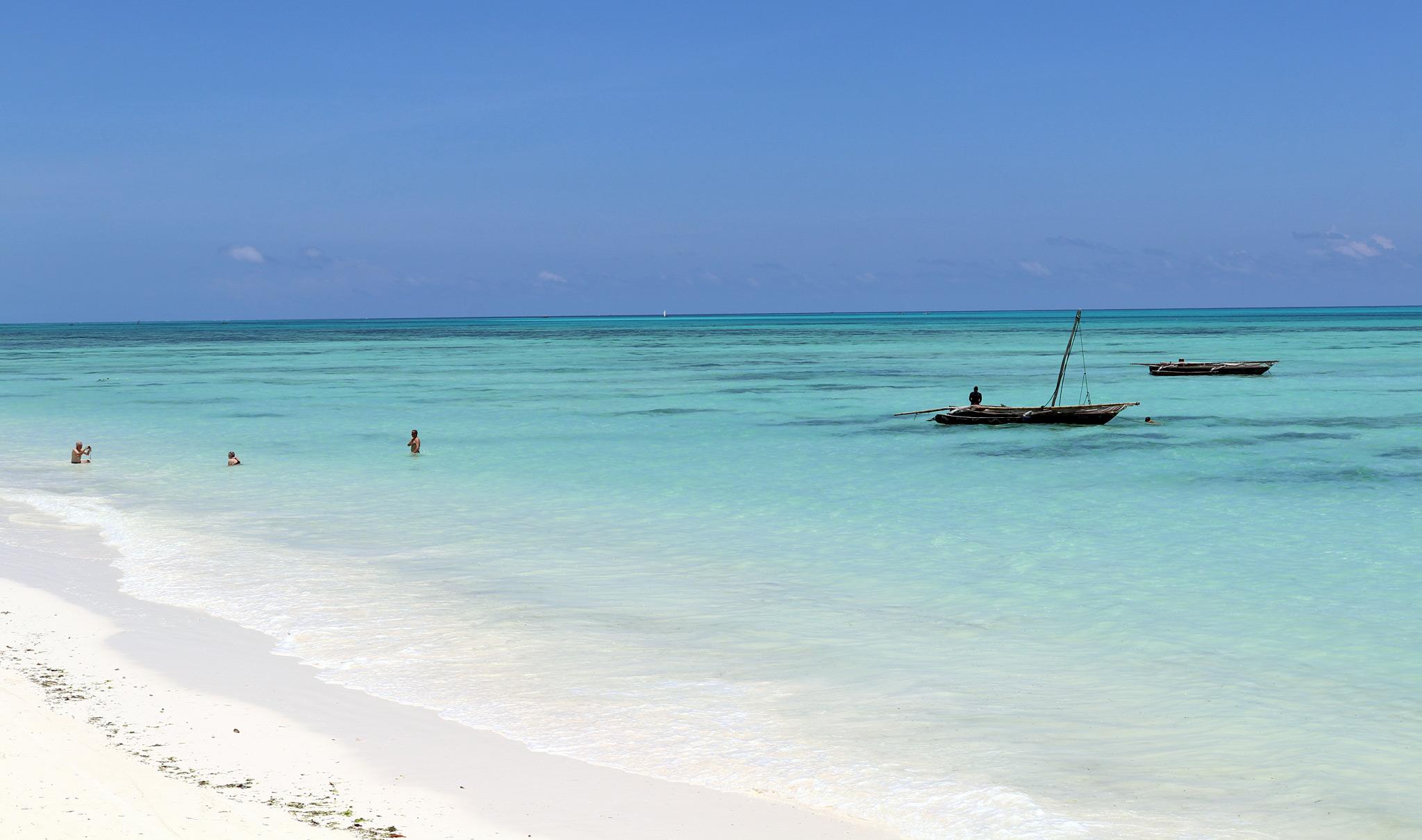Tanzania and Namibia are popular travel destinations, and even though they are vastly different, deciding which one to visit can be a challenge. It’s a special trip, a memorable experience: Should you travel to Tanzania or Namibia? We are here to help you make your decision easier.
An overview of Tanzania vs Namibia as travel destinations
Tanzania and Namibia are both large countries, with Namibia being 2.3 times larger than Germany and Tanzania being 2.6 times larger. They have stable governments and thriving tourism industries. However, there are some notable differences between the two countries.
Namibia is the driest sub-Saharan country, home to spectacular landscapes, including the Kalahari and Namib deserts. Additionally, with Namibia’s population being about three million, you can enjoy stunning landscapes that are mostly free of human habitation. Although these desert habitats have lower mammal wildlife populations, you can still spot the Big Five and more in Namibia’s northern parks. Despite the coastline’s dramatic beauty, its location on the Atlantic Ocean with its cold currents means there are better destinations for a classic beach retreat. Finally, lower national park fees and a broader range of accommodation types, including family-friendly farm stays, mean Namibia is slightly cheaper and perfect for families.
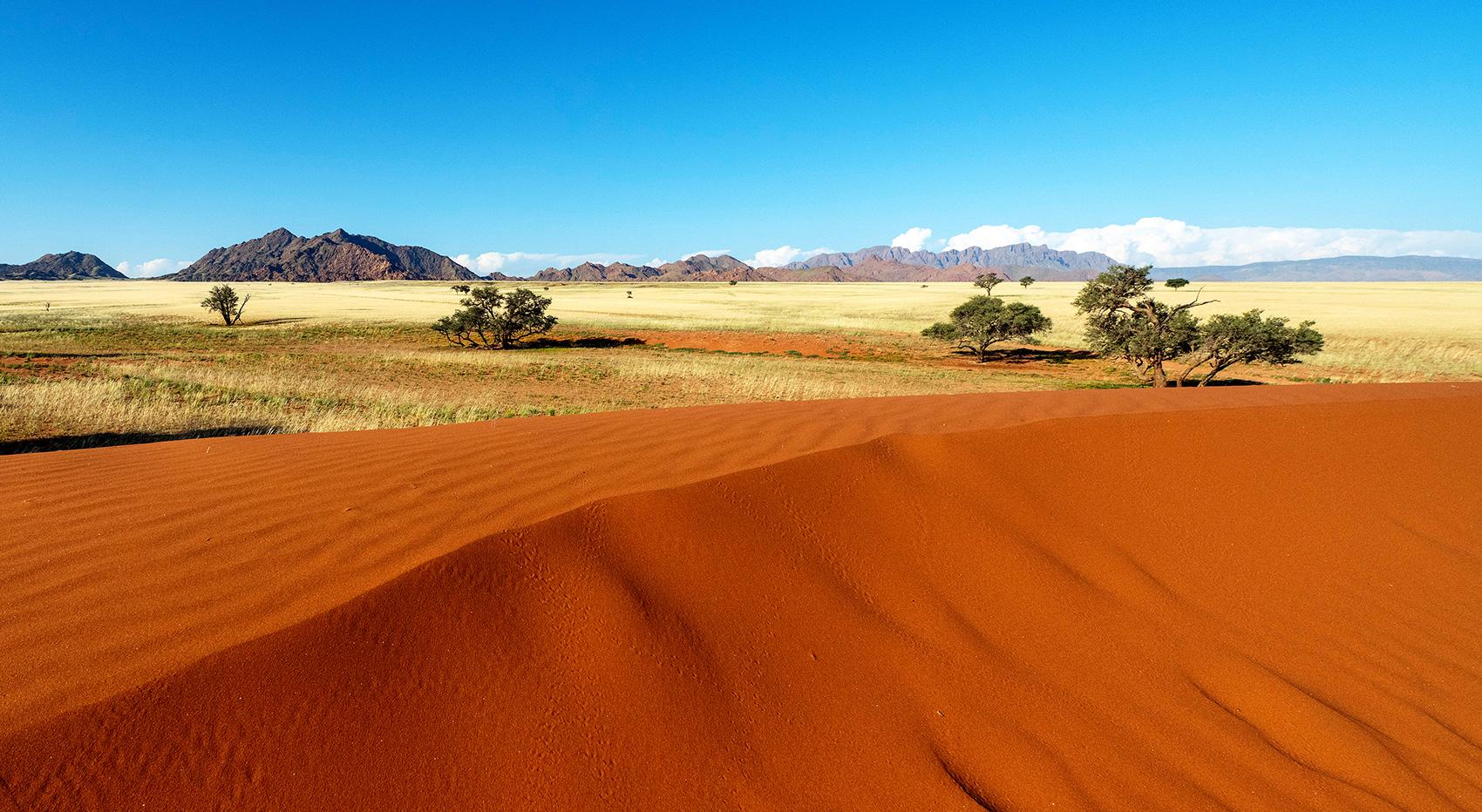
In comparison, Tanzania’s tropical climate supports incredible ecosystems with abundant wildlife across multiple parks across the country. Additionally, its mountains, proximity to the equator, and location on the Indian Ocean offer authentic safaris combined with mountain treks or tropical beach getaways to Zanzibar. However, higher daily park fees combined with a slightly narrower range of types of accommodation make Tanzania a somewhat more expensive destination than Namibia.
One difference is clear. Tanzania is for you if you want to combine a safari with a tropical beach retreat or mountain trek. However, Namibia is your destination if you would like to experience stunning desert landscapes at a slightly lower price.

Types of travel in Tanzania and Namibia
The types of travel in Namibia and Tanzania have one similarity and one difference. The similarity is that guided group safaris and private safaris are available in both countries. With guided safaris, you benefit from knowledgeable guides, who take care of driving and navigating long distances, so you don’t have to.
Private safaris offer complete flexibility over dates and destinations. They are ideal for families, honeymooners, birdwatchers, and photographers. In contrast, friends, couples or solo travelers can share the cost of a safari with like-minded people on group safaris with fixed itineraries and dates.
The one difference is that self-driving safaris are only recommended in Namibia. There are options to do a self-drive trip in Tanzania. However, in this blog we share our thoughts on why we currently don’t offer and don’t recommend self-drive tours in Tanzania. Consequently, Namibia is for you if you prefer to travel independently and have good navigational and driving skills.

Types of accommodations
Namibia and Tanzania offer various accommodation options, including lodges, permanent tented camps, and mobile camping experiences. However, there are three differences between the two destinations.

Firstly, in Namibia, the demand for accommodation often exceeds the supply, so booking at least nine months to a year in advance is essential. In comparison, Tanzania has more availability, but finding a place to stay during peak seasons can still be challenging.
Secondly, Namibia has more diverse accommodation options, including guest houses and farm stays, ideal for families travelling with young children.
Thirdly, accommodation is more affordable in Namibia, thanks to a broader range of accommodation options and lower park fees. In contrast, park fees in Tanzania can add up when overnighting inside national parks.

Wildlife experience – should I go on safari in Tanzania or Namibia?
Both Namibia and Tanzania are home to a plethora of wildlife. However, Tanzania has a higher level of biodiversity across numerous national parks, which allows visitors to witness a greater number and variety of animals and birds. If you want to go on a classic Big Five safari and you want to see as many animals as possible, we recommend going on safari in Tanzania.
You want to plan your tailor-made Tanzania safari?
Get in touch with us!
Best places for safaris in Tanzania and Namibia
Our where-to-go guides for Tanzania and Namibia are excellent starting points for researching the best places for a safari. However, here is an overview:
There are three safari circuits in Tanzania. The Great Wildebeest Migration occurs on the Northern Circuit, specifically in the Serengeti National Park. Tarangire National Park and the Ngorongoro Crater are other highlights of this circuit. The Southern Circuit features remote wildernesses with world-class parks like the Ruaha National Park and Nyerere National Park. Meanwhile, the Western Circuit is even more remote. Consequently, few people travel to parks like Katavi National Park, Mahale Mountains National Park, and Gombe Stream National Park.
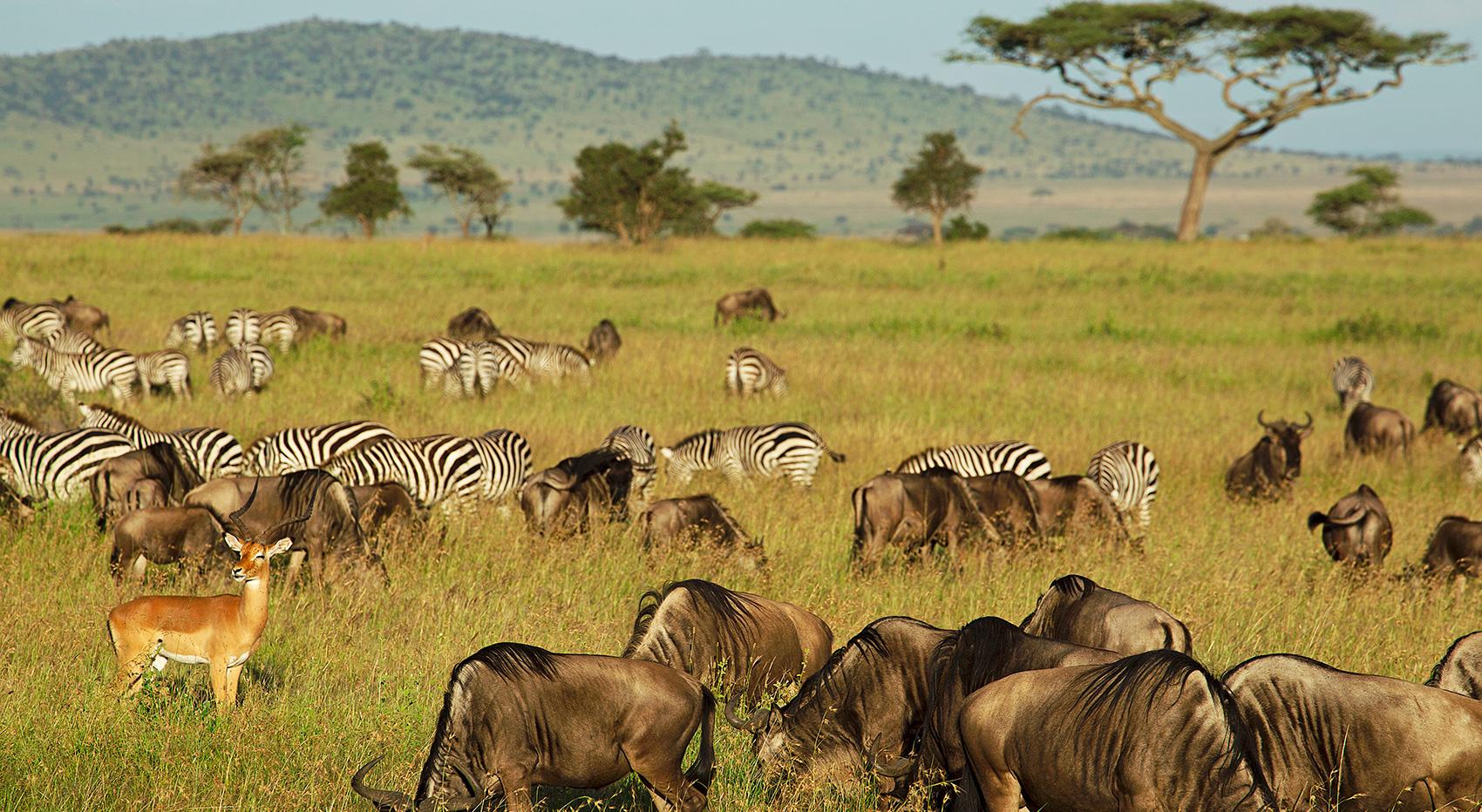
Southern Namibia features stunning desert landscapes, while the north has a diversity of wildlife. The south is famous for the Kalahari and Namib Deserts, with Sossusvlei home to Namibia’s world-renowned dunes. Moreover, the vast landscape of the Fish River Canyon near South Africa’s border will leave a lasting impression. In northern Namibia, there are several incredible attractions. These include Etosha National Park, which has a vast salt pan and excellent wildlife viewing. The Caprivi Strip (Zambezi Region) is a lush area known for its exciting national parks, while Damaraland is renowned for its stunning scenery, desert-dwelling elephants and black rhinos. Finally, the Skeleton Coast is where the desert meets the Atlantic Ocean.
In conclusion: You can see the Big Five in both countries. However, if you are looking for a classic safari experience, we recommend going to Tanzania.

Safari vehicles
Safari vehicles are designed to improve wildlife-viewing experiences thanks to large windows, roof hatches, and charging points.
Both countries have closed as well as open safari vehicles. Closed vehicles make driving long distances between national parks more comfortable. Open vehicles – which are not fully closed at the sides – allow you to experience the elements while watching wildlife. These open vehicles are used for game drives within national parks.
The one difference is that self-driving tours are very popular in Namibia, but not recommended in Tanzania. Namibia is a very popular destination for self-driving with excellent roads and numerous vehicles to rent. If you don’t mind driving very long distances and have basic vehicle mechanics knowledge, including how to change a tyre, you can opt for a self-drive tour in Namibia. There are different types of rental vehicles you can choose from, depending on the number of travelers and your route.

Guided safaris can offer a more enriching experience as the guides possess extensive knowledge about the wildlife. They can reveal secrets like identifying when a leopard is nearby based on an excited bird call or explaining specific family behavior in herds of elephants. Guided safaris suit people who don’t want to drive, maintain a vehicle, and navigate through huge wildernesses.
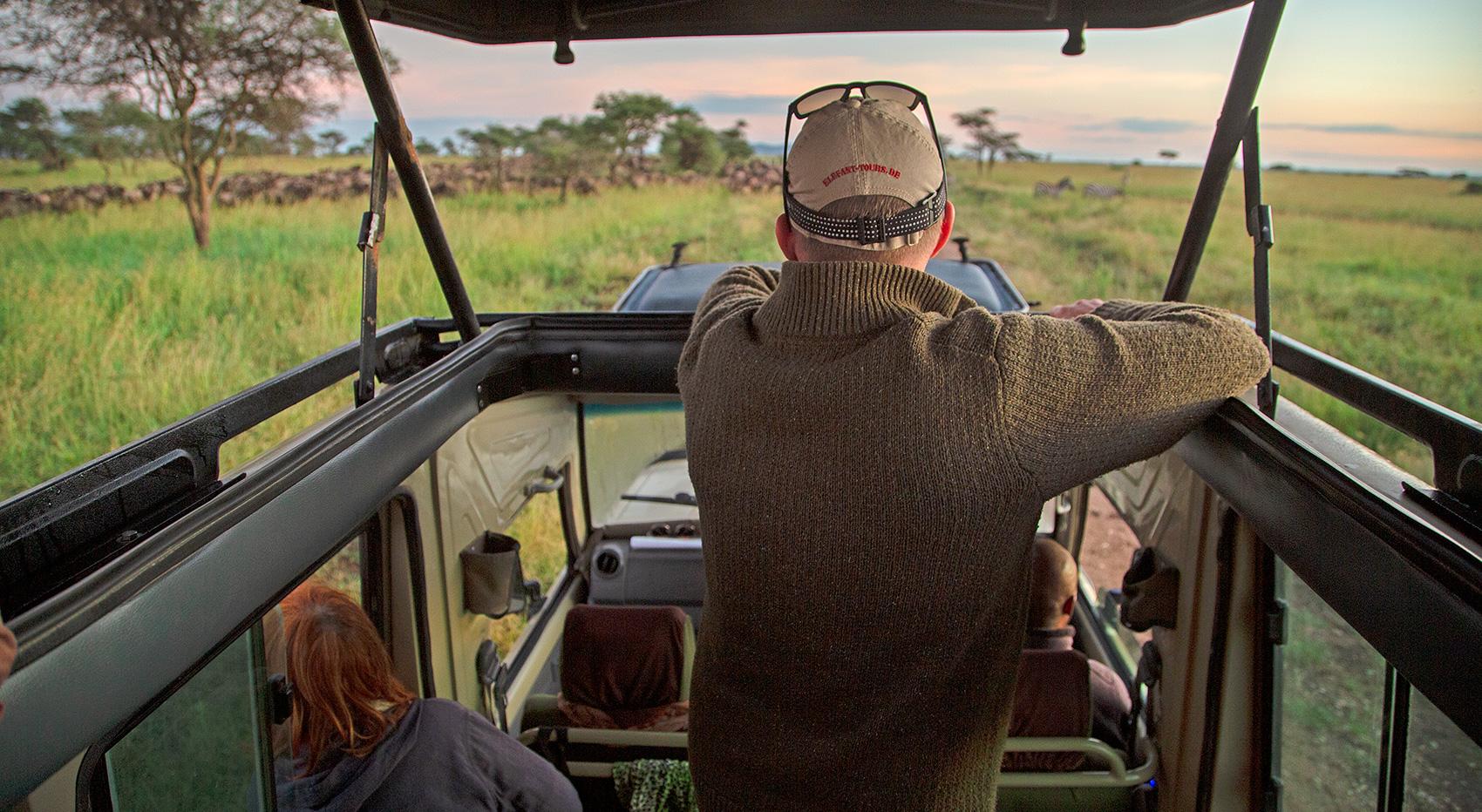
Cost of a safari – is Tanzania or Namibia cheaper for a safari?
A safari to Tanzania or Namibia will not be a bargain. However, the cost of travelling to the two countries differs, which may affect your choice of destination.
Tanzania is slightly more expensive than Namibia because daily national park fees add up. In addition, even though Tanzania has accommodations that suit most budgets, Namibia offers a wider variety of budget options, allowing you to save on lodging. Daily park fees into Namibia’s parks are also lower, which is another reason why Namibia is a more affordable destination than Tanzania.
Booking during the shoulder or low seasons instead of booking a trip during the high and peak season can save you money in both countries. Moreover, if you are traveling alone or as a couple, opting for a group safari enables you to share the safari’s cost with a small group of individuals. The best part is that Tanzania-Experience or Namibia-Experience group safaris will run even if only two people book to join the group.
Two of our favorite Tanzania safaris:
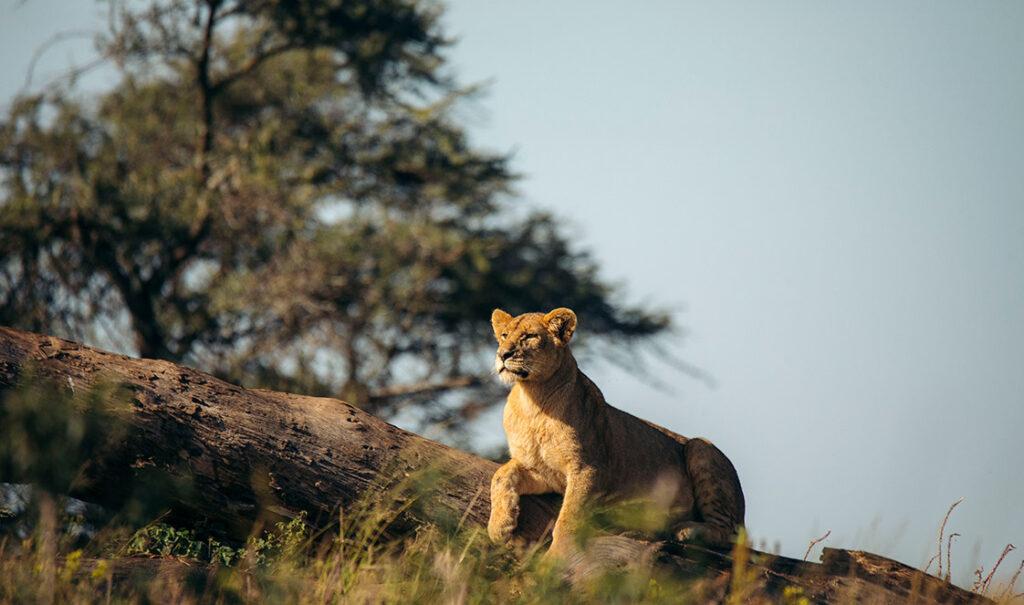
Best of Tanzania
Places Tarangire National Park, Serengeti National Park, Karatu, Ngorongoro Crater
from 2,840 USD per person sharing
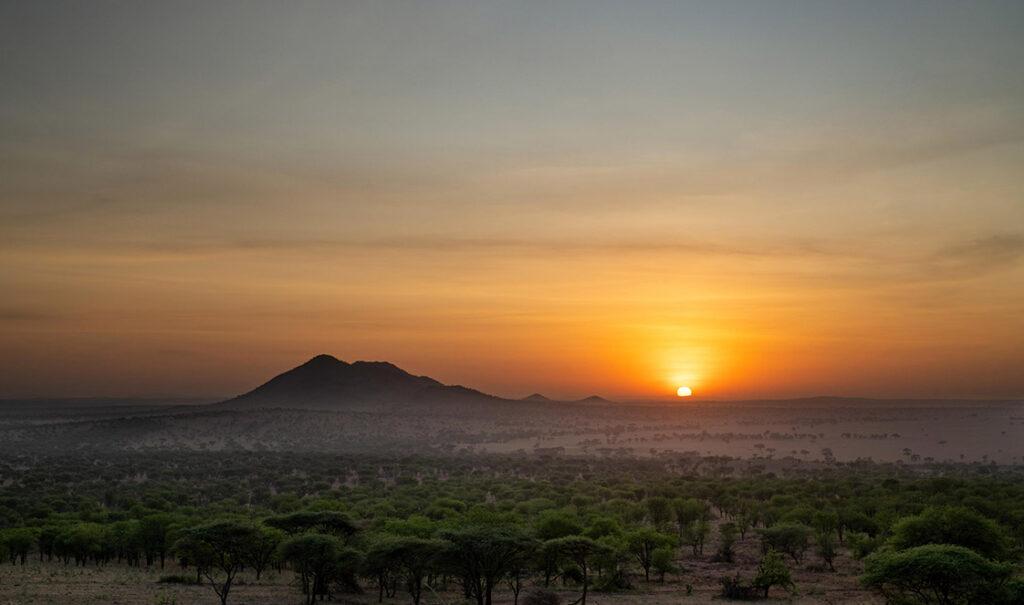
Tanzania in Style
Places Tarangire National Park, Karatu, Ngorongoro Crater, Serengeti National Park
from 3,860 USD (based on 7 persons)
Best Time to visit Tanzania and Namibia
Tanzania as well as Namibia experience a dry season between June and October. These months are generally considered the best time to visit either country. There are a few details to consider though.
Best time to visit Namibia
Namibia is a year-round destination. However, the best time to visit is during the dry season from June to October, when temperatures are lower, and rainfall is minimal. During the dry season, the combination of sparse vegetation and the wildlife congregating near permanent water sources makes wildlife spotting easier. However, keep in mind, that this is the high season, and peak prices apply.
Namibia’s low season coincides with the rainy season from November to March, when temperatures and humidity are high. On the upside, it is easier to make last-minute bookings at a lower price. Wildlife viewing is more challenging this season as the animals disperse into the wilderness, especially in places like Etosha National Park.
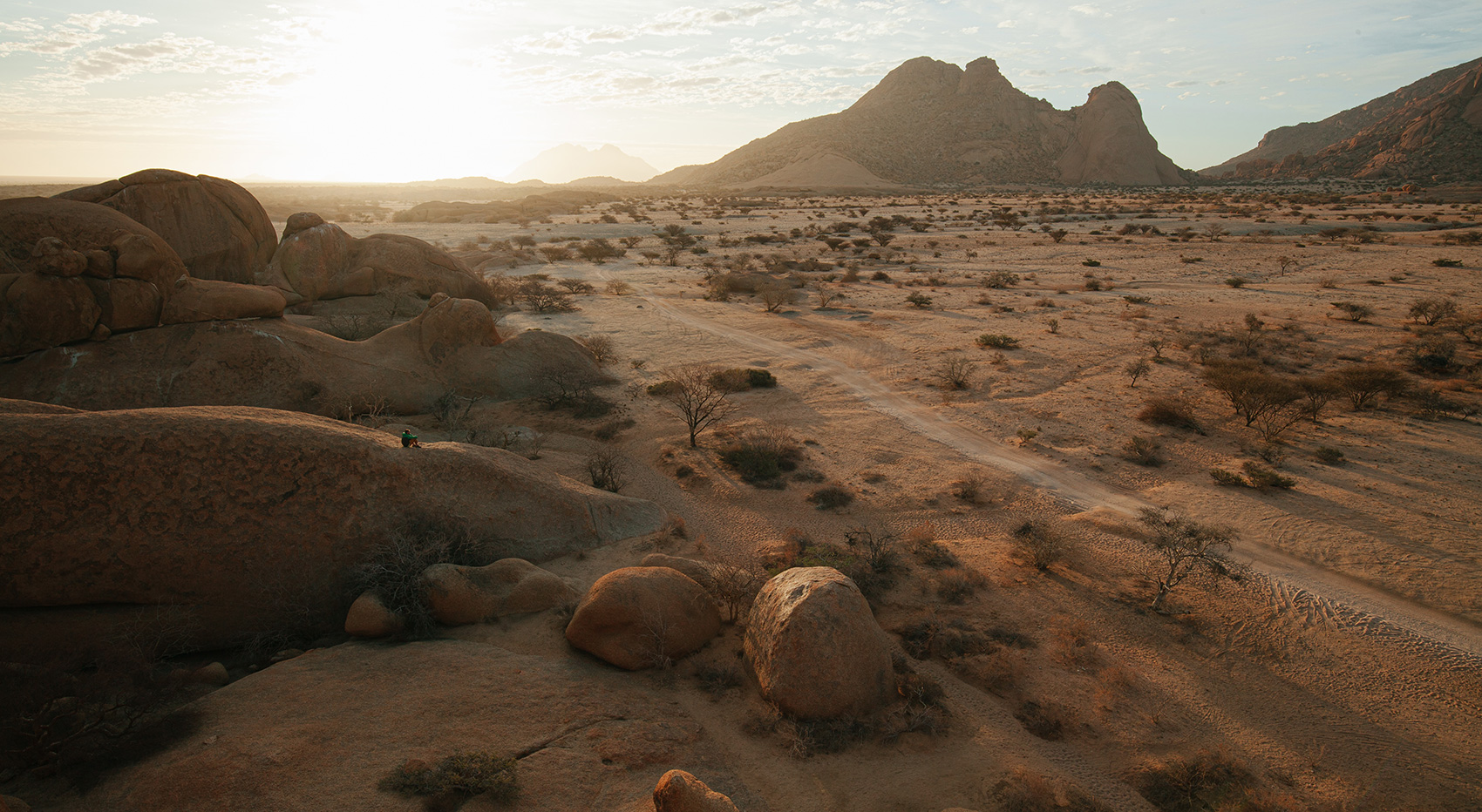
Best time to visit Tanzania
The best time to visit Tanzania is the dry season from June to October, when pleasant temperatures offer ideal conditions for a safari, Kilimanjaro climb, or beach retreat. However, it is also the high season with peak prices.
Tanzania’s long rains from mid-March to May are the low season when prices are lower. If you enjoy being in nature with fewer people around and don’t mind plans changing when heavy rainfall occurs, this season is perfect for you. Moreover, the green landscapes and dramatic cloud formations create ideal conditions for a photography safari.

Accessibility: Is it easier to travel to Tanzania or Namibia?
Depending on your departure location, you can choose from direct flights or one-stop flights to Namibia and Tanzania.
Namibia has two international airports. The most popular is Hosea Kutako International Airport (HKIA/ WDH) in Windhoek, followed by Walvis Bay International Airport (WVB) on the Atlantic Ocean. Connecting flights are available from South Africa’s Johannesburg and Cape Town international airports. Moreover, Namibia-Experience can make cross-border safaris between South Africa and Botswana a reality thanks to years of experience and sister-companies in all three countries.
Tanzania has three international airports. If you have booked a safari on the Northern Circuit, Kilimanjaro International Airport (JRO) in Arusha is the best starting place. Alternatively, if you are destined for safari on the Southern Circuit, fly into Julius Nyerere International Airport (DAR) in Dar es Salaam. Depending on your route, you can leave Tanzania after your beach holiday from Abeid Amani Karume International Airport (ZNZ) in Zanzibar.
Finally, cross-border safaris into Kenya are possible with Tanzania-Experience and our sister-company in Kenya.

Other experiences: Things to do in Tanzania and Namibia
Namibia and Tanzania offer fantastic safari experiences with many similarities, including balloon, honeymoon, and photography safaris. However, there are significant differences to consider.
Tanzania’s tropical climate is ideal for safaris, hiking up Mount Meru or Mount Kilimanjaro or enjoying a tropical beach retreat in Zanzibar. With multiple safari circuits, Tanzania is among the best African countries to see abundant wildlife species. On the other hand, Namibia is an excellent country for a serene experience with spectacular scenery. Although Namibia’s national parks are spread out and wildlife populations are lower than in Tanzania, visitors can still see a great deal of wildlife.
Unique experiences in Namibia include:
- Exploring the capital Windhoek, followed by remote places like the coastal town of Luderitz and the Kolmanskop ghost town, which seem frozen in time and give visitors a sense of stepping back in time. This area is also home to the wild horses of Garub.
- Visiting Swakopmund, another coastal town and gateway to adventure, where you can kayak, explore the desert on quads, or enjoy the town’s coffee shops and restaurants.
- Stargazing in Namibia’s deserts with clear skies devoid of light pollution.
- World-class hiking, from short walks to multiple-day hikes.

Unique experiences in Tanzania include:
- Walking and boat safaris.
- Wildebeest migration safaris.
- Visiting the UNESCO World Heritage Site of Stone Town.
- Enjoying a spice tour on the Zanzibar archipelago.
- Scuba diving on coral reefs or snorkelling with Whale Sharks.
- Birdwatching safaris in multiple destinations.
- Climbing Africa’s tallest mountain, Mt Kilimanjaro.

Summary – which is a better fit for me, Tanzania vs Namibia?
Namibia is an excellent destination at a slightly lower cost, with a wide range of accommodation styles, the freedom to enjoy self-drive safaris and lower park fees. Although wildlife populations are lower, you can still enjoy a diversity of species, including the Big Five. Consequently, Namibia is the perfect destination to experience unique landscapes and excellent wildlife spotting with your family.

Tanzania offers authentic safaris across multiple national parks, where you can enjoy one of Africa’s highest concentrations of wildlife. You can even climb Africa’s highest mountain Mt Kilimanjaro in Tanzania. Moreover, if you want to conclude your experience by recharging your mind, body, and soul on the tropical beaches of Zanzibar before returning home, then Tanzania is for you. Although Tanzania may be slightly more expensive, you’ll be rewarded with unforgettable experiences. It is the perfect safari-trekking-beach destination.
After many years of experience, we are here to make your dream safari come true! Get in touch with a country expert for a no obligation chat and let us help you make your safari a reality.
 on Tripadvisor
on Tripadvisor



